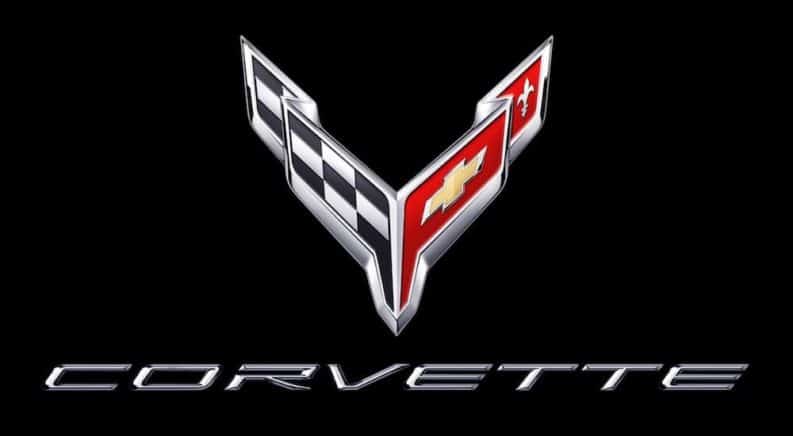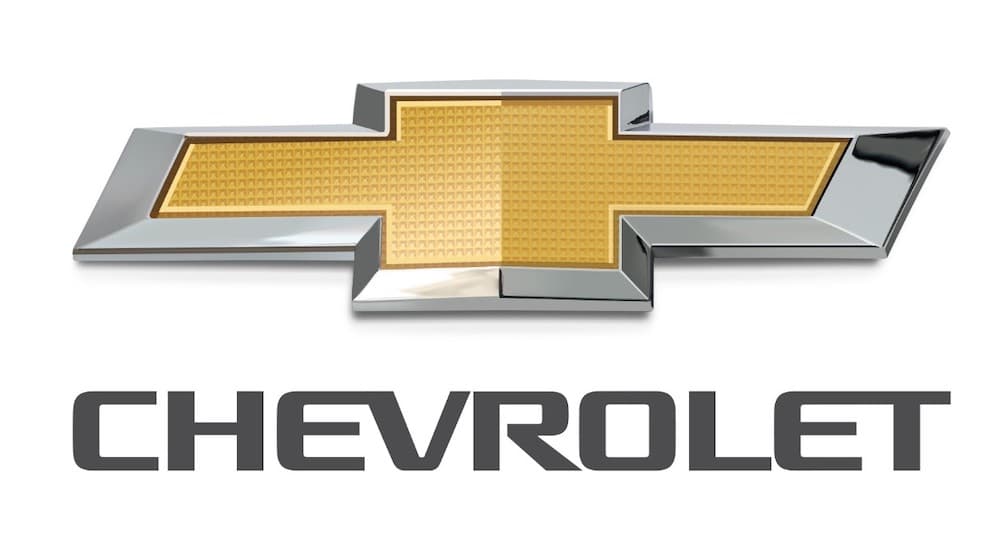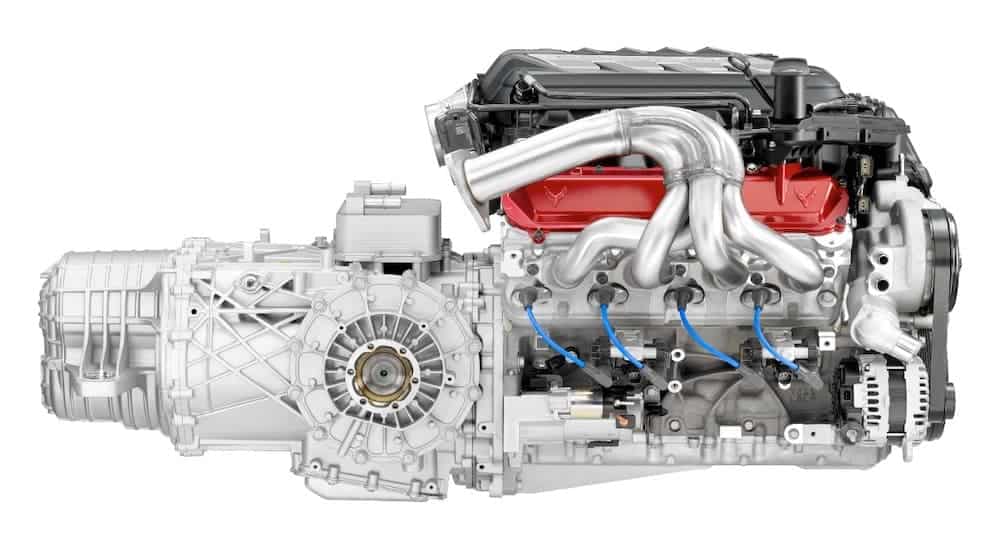Chevrolet is never content with leaving the Corvette as is. For them, it’s not enough to simply tweak the fenders, tilt the spoilers, or bump up the horsepower and call it a day. Chevy wants the Corvette to be the best car on the market, and this may soon include a new E-Ray model. The real hook for the upcoming sports car that will have motor enthusiasts clamoring to find a Chevy dealer near you is the fact that the Chevy Corvette E-Ray is rumored to be the first Corvette hybrid model. There have been loads of leaks and rumors coming out about this model in the past few months, so let’s see what this new model may have in store.
What Chevy Is Changing With The Corvette
Nothing about the E-Ray has been officially announced yet, but many have been able to deduce from other statements the company has released what might be some of the cool things we can expect in this new model. Exterior details, options, or packages haven’t been widely disclosed yet for the Corvette E-Ray. Still, early scouting has shown that Chevy appears to be overhauling the powertrain for a version of the Corvette known as the E-Ray.
The Corvette E-Ray is reportedly going to be a hybrid system powered both by an electronic supply and a traditional V8 combustion engine. The E-Ray will have its electronic powertrain components tucked away in the back, and the electric battery pack will supposedly supply anywhere between 150 and 175 horsepower on its own. Now, for the legacy of something as renowned in the sports world as the Corvette, 175 horsepower is laughable. However, that’s just what the electric powertrain generates on its own.
The E-Ray will reportedly be paired with GM’s reputable LT2 V8 engine from the Corvette C8, which tops off at 495 horsepower and 470 lb-ft of torque. It’s likely that it will be paired to the eight-speed dual-clutch transmission from the C8 as well, which would give it a theoretical total horsepower of over 600. With so much juice flowing through the vehicle, it’s said that the Corvette E-Ray is being fitted with a special flat-plane crankshaft to maximize the E-Ray’s lap times and converge all of that energy from the engine into pure, efficient acceleration.
One other highlight is that the electronic powertrain will allow the E-Ray to designate power to different wheels, making it an all-wheel drive sports car. It will be interesting to see how the dispersion of torque works between the electric battery pack and the combustion engine, which should give the Corvette E-Ray some extra oomph on the race track. Either way, this is set to be an exciting addition to the Corvette lineup.
The Benefits of a Flat-Plane Crankshaft
Ford made waves when they talked up the Mustang using the flat-plane crankshaft for the GT350’s V8 to get the most out of the 5.2-liter engine. It naturally led more people to ask precisely why more companies weren’t using flat-plane cranks in their sports cars, especially when they are used so often in European sports and supercars? Well, Chevy listened and had an answer: the E-Ray.
The Corvette E-Ray is said to be equipped with a flat-plane crankshaft, which basically means a more compact design, reduced inertia, and reduced rotational mass. The reason for the differences in the design changes how the cranks rotate the pistons in the chamber and deliver torque.
On a cross-plane crank, the first and last fulcrums where the connecting rod for the pistons are positioned are at a 180-degree angle from one another, whereas the two fulcrums in the middle of the shaft are at 90-degree angles. This means that every time the crankshaft rotates 90-degrees, a cylinder fires, which converts energy for the wheels. A flat-plane crankshaft is aligned so that a piston fires with every 180-degree turn.
The displacement from the cross-plane crankshaft creates more of an alternating pattern between pistons, which offers more of a balanced output for the engine performance. This rapidly alternating pattern is what creates that satisfying growl and torque output. However, it’s putting less wear and tear on the engine as opposed to the flat-plane crank, which has the pistons alternating in rotation more evenly like a symbiotic seesaw. This reduces noise, increases performance, and allows the engine to maximize more revolutions per minute.
The downside to a flat-plane crank is that it produces a lower torque output, especially at lower outputs. However, modern technology allows for active engine mounts, dampening, and turbocharging that will help flat-plane cranks produce massive amounts of torque even from down low. Luckily, it looks like the Corvette E-Ray engine is specifically tuned for high-performance output, making the flat-plane crank a perfect match for the car.
Why The LT2 V8 Is Important For Performance
The E-Ray’s hook is its hybrid system with an electronically powered drive unit. However, the core of the powertrain’s functionality is still reliant upon the LT2 V8, which is going to be doing most of the heavy lifting for Chevy’s new sports car. The V8 isn’t just housing 490 horsepower and 470 lb-ft of torque. It’s also a small-block engine designed around performance efficiency. This includes a four-stroke piston rotation at an 11.5:1 compression ratio matched to the aforementioned flat-plane crankshaft.
Efficiency is further boosted thanks to doing away with a traditional wet-sump oil system for dry-sump oil filtration. The dry-sump is fitted with a racing oil filter, and a scavenge manifold to increase vacuum scavenge. This reduces inefficiency thanks to the scavenge pumps pulling, pumping, and moving oil through the system, while excess air is filtered out through a separator so that compression ratios are optimized without being compromised by excess airflow.
Overall, this improves the entire oil/compression/vacuum process so that the engine can maintain peak performance without much thermal loss. In turn, there’s practically no wasted motion taking place within the engine block. This also reportedly helps decrease the amount of oil volume required for engine functionality, but at the expense of having a slightly harder-to-reach oil pump. The good part is that the dry-sump oil system, improved flat-plane crank, and mated electric power unit will help with the Corvette E-Ray overall performance, whether it’s on the track or the road.
Where Does the E-Ray Fit In?
Details on the Corvette E-Ray’s exterior, like everything else, haven’t been released yet, but the current reports indicate that the E-Ray will have a widebody design that’s shared with the upcoming Z06 that’s set to debut in 2021 as a 2022 year model. So while details may be sketchy regarding aspects of the E-Ray, at least do we know what the general frame will probably look like when the 2022 Corvette Z06 is unveiled.
Supposedly the E-Ray will fit between the base Corvette C8 trim and the Z06, but that’s assuming that Chevy doesn’t position the E-Ray as the top trim. There are already reports indicating that the Grand Sport trim for the Corvette will be done away with in place of the E-Ray, which is expected to be a mid-trim offering. However, we don’t know if that will be for the 2022 model year lineup or the 2023 model year lineup.
What will be interesting is to see how the aerodynamics will change (if at all) according to the dual powertrain setup and what sort of suspension modifications will be made to accommodate what many believe will be an all-wheel drive system. One thing is for sure; there will be plenty of sports car enthusiasts keeping their eyes peeled for more information to see if the E-Ray is as impressive on the road as it looks on the report sheets, especially if it generates the kind of horsepower that we’re all expecting.






